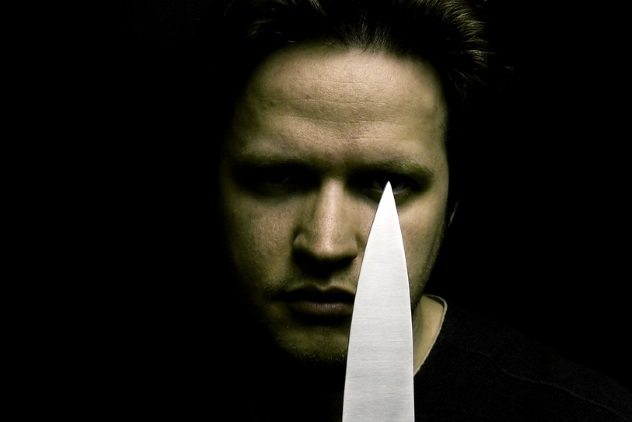

They usually do not take the extra precautions to cover up or remove any evidence of the crime, and they tend to travel from state to state, or even to other countries, to avoid being captured by the authorities. These kind of killers rarely plan out their actions, and they appear to kill at random, usually people that happen to be at the wrong place at the wrong time. Disorganized serial killers, on the other hand, tend to have lower IQ scores than average, ranging from 80 to 95. It is not uncommon for this type of psychopath to watch potential victims for days to find someone they consider a good target. Every detail of their crime is planned out well in advance, and the killer take every precaution to make sure they lerave no evidence behind to link them to a murder.
Serial killer definition serial#
Organized serial killers tend to be rather intelligent, usually having IQ scores ranging from 105 to 120. And, depending on the nature of their crime, they are either categorized as organized or disorganized.

Serial killer definition full#
You see a full list of the different kinds of killers and the characteristics of their crimes by clicking here. history, after he confessed to 93 killings between 19.Currently, there are four main types of serial killers listed, with many different subcategories listed under each. Samuel Little, a transient former boxer and career criminal serving time for two murders, was recently identified by the FBI as the most prolific serial killer in U.S.About 52 percent were white, 40 percent black, and 6.7 percent Hispanic.Their favorite murder weapon was a gun (42 percent), although 6 percent preferred poison and 2 percent axes.About 32 percent of these killers did so for enjoyment (thrills, lust, and power) 30 percent for financial reward 18 percent in anger 6.3 percent to advance a criminal enterprise and fewer than 1 percent because a cult put them up to it.Since 1900, there have been 3,000 identified American serial killers who've collectively killed nearly 10,000.Are serial killers to blame? Here's everything you need to know: There have been 220,000 unsolved murders in the U.S. Thrill seekers are serial killers that see outsmarting the law as some sort of amusement. The four main types of serial killers based by the type of crime they commit are as follows: thrill seekers, mission-oriented, visionary killers, and power/control seekers.

Those who've studied serial killers believe that many are at least partly motivated by the attention and fame that mass media can provide mass murderers. Serial killers often are loners who fear all relationships and seek to control, to destroy other people to eliminate the possibility of another humiliating rejection. As a consequence of that trauma or separation, scientists believe, they learned to suppress empathy or suffered damage to the areas of the brain that control emotional impulses. Research shows that certain genes can predispose people to violence. Many serial killers experience childhood trauma or early separation from their mothers. The term was originally a technical one used by the Federal Bureau of Investigation in America it came to public notice in the 1980s in the wake of a number of notorious cases, notably the crimes eventually traced to Theodore Bundy and John Wayne Gacy. They never learn the appropriate responses to trauma, and never develop other emotions, which is why they find it difficult to empathize with others. A murderer who repeatedly commits the same offence, typically following a characteristic, predictable behaviour pattern. Trauma is the single recurring theme in the biographies of most killers As a consequence of this trauma, they suppress their emotional response. Many serial killers are survivors of early childhood trauma of some kind – physical or sexual abuse, family dysfunction, emotionally distant or absent parents. The book explores how our understandings of serial killers – called “monsters” before the advent of modern psychology – have changed over time, and considers answers to a difficult question: what, exactly, “makes” a serial killer? Peter Vronsky is t he author of Sons of Cain: A History of Serial Killers from Stone Age to the Present, a book that explores why some people become killers, and others don’t.

Are serial killers a product of nature (genetics) or nurture (environmental factors)? A serial murderer has committed two or more murders separated in time and often in widely different geographic areas, and involving victims who are usually. One of the oldest questions in criminology – and, for that matter, philosophy, law, theology – is whether criminals are born or made.


 0 kommentar(er)
0 kommentar(er)
